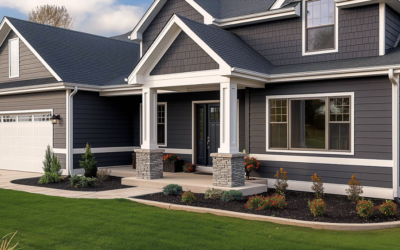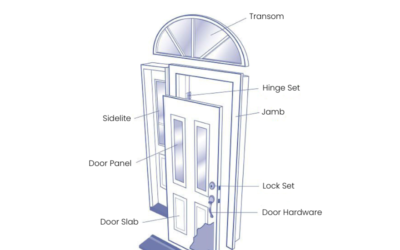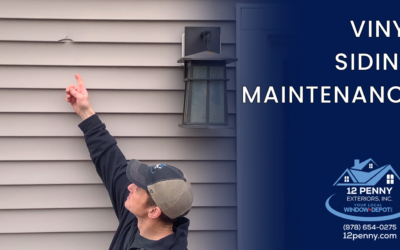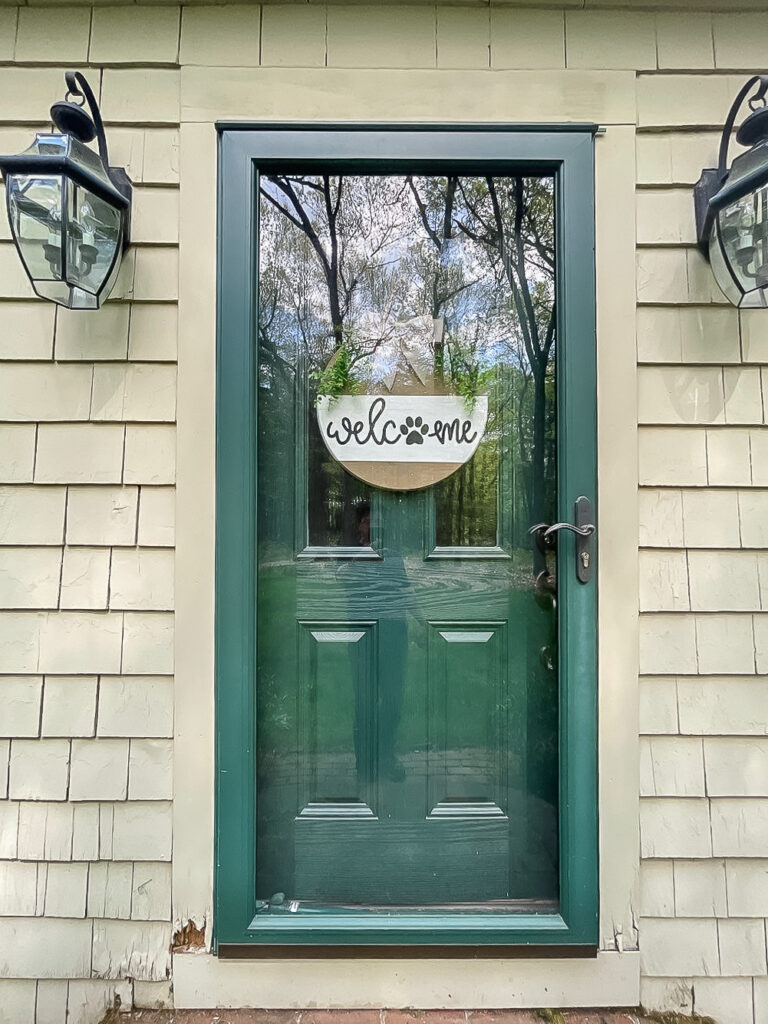
This looks like an ordinary door, typical to what we see installed here in New England. We got the call to replace this door because the skin of the door itself is coming off and is out of warranty (it was installed in 2006). While I was there, I noticed the rot developing in the lower corners of the pine trim. The left side definitely is worse than the right side, but still I could see rot on both corners. I don’t love the way the kickplate (the horizontal piece under the door) goes underneath the side trim (as opposed to side trim continuing all the way down along the sides of the kickplate) because that is a recipe for trapping water and rotting out the trim and possibly more.
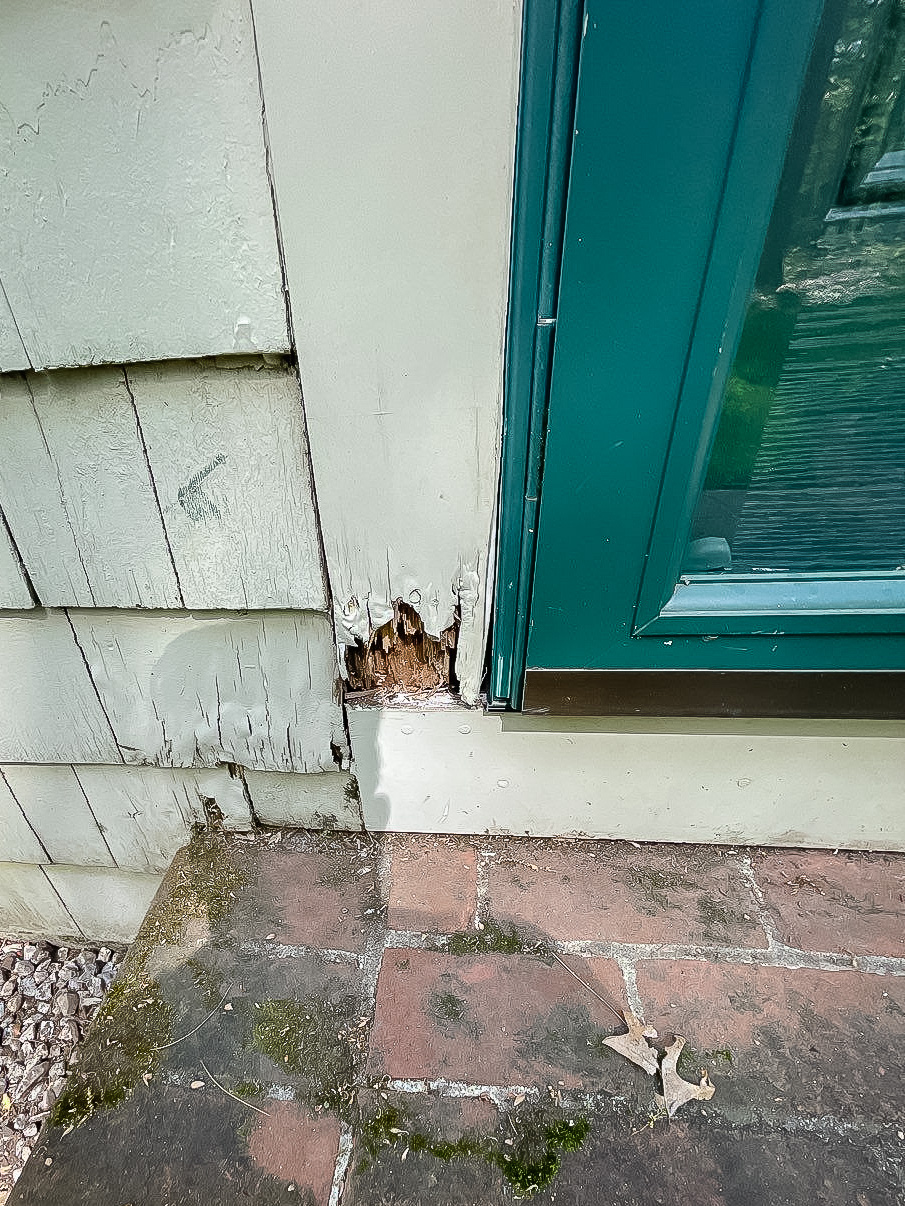
Upon further inspection, I really didn’t like how soft the left corner was. The kickplate had been replaced at least one other time before so maybe the kickplate rotted first. But the sides were never addressed.
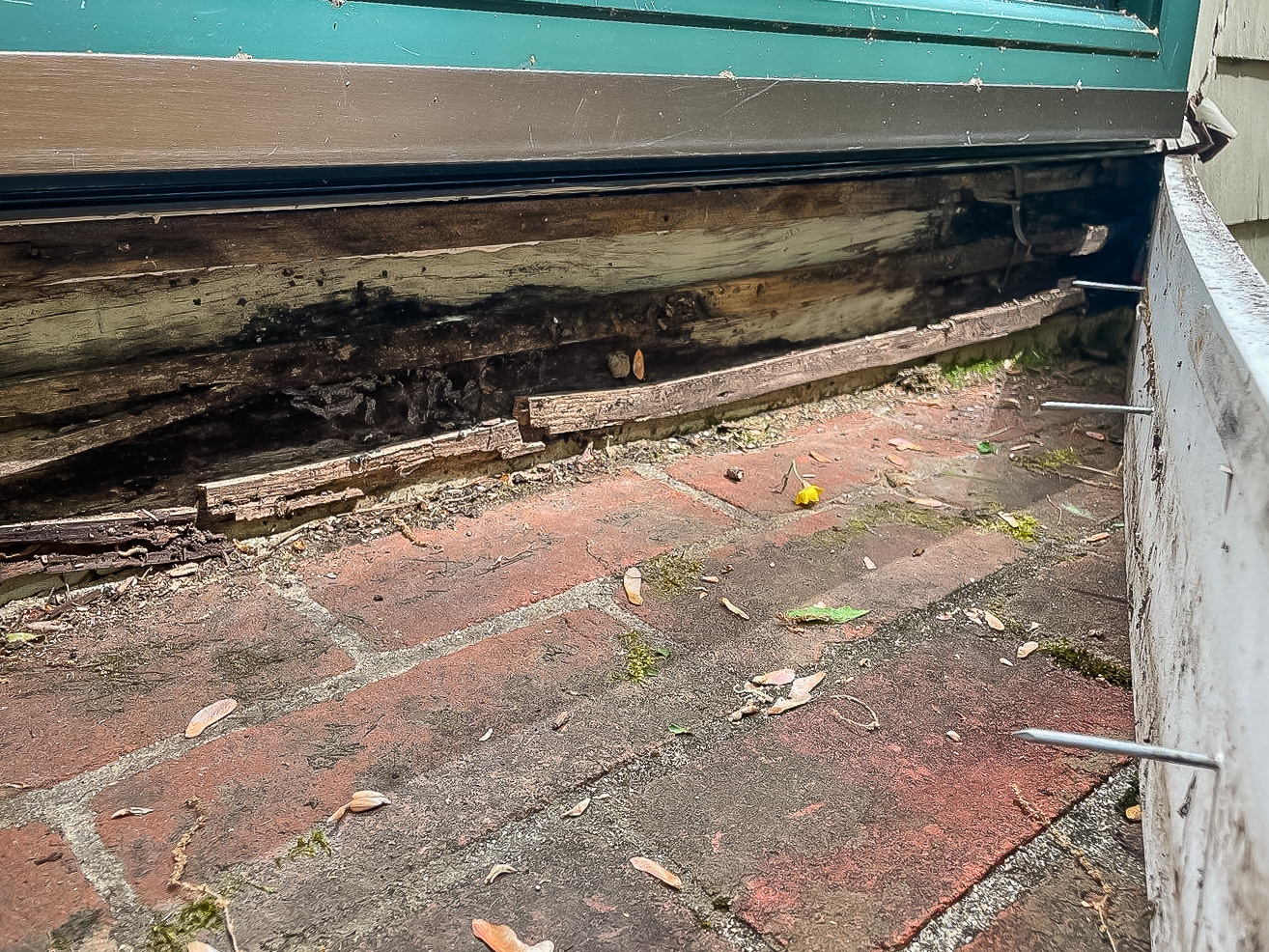
To see what is going on and to confirm my suspicions, I removed the kickplate to find not only are the side trim pieces rotting, but the sill plate underneath the door is showing signs of rot, as well. That is bad. What was once a call to replace the door is going to turn into a lot more than that.
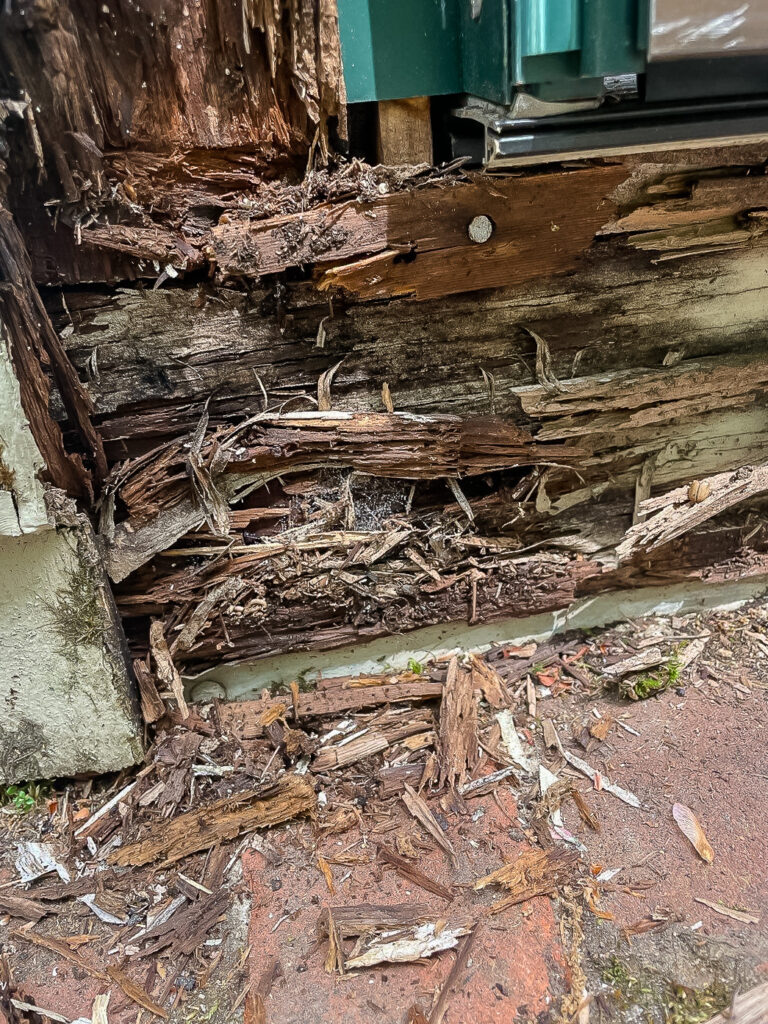
This is behind the left corner. All the exterior sheathing has rotted away, the framing on the left side of the door is starting to rot, and possibly the sill plate will show signs of rot once we clean everything out and get a full inspection. What you don’t see are the 2 garden snakes that were living behind the kickplate. They quickly burrowed themselves back into the wall of the house once I disturbed them. Yikes.
The problems with unseen rot are many. For one thing, the integrity of the framing can be compromised if the rot is too bad. This can lead replacing framing, sill plates, and other vital parts of the structure of your home. Rot can also lead to black mold. The reason wood rots is because it gets wet and cannot dry out. Once there is standing water or dampness, mold can thrive, especially on sheetrock and exterior sheathing. And let’s not forget about bugs. Ants love wet wood because it is easy for them to burrow into it. Ants – which are more common here in New England than termites – don’t eat wood. They move wood out of the way so they can make their tunnels. For ants, soft, wet wood is a lot easier to move than dry, hard wood. If a homeowner suspects rot, I often ask “Do you see a lot of ants, especially in the summer?”
But more often than not, homeowners have no idea that rot is even a problem. Unfortunately, ants do a great job of hiding inside walls, especially if their food source is plentiful and they do not have to go into your home looking for scraps. And most homeowners do not even think about doing a visual inspection of their house every year or so, which is what 12 Penny Exteriors recommends to anyone who has wood siding, window trim or fascias and soffits.


